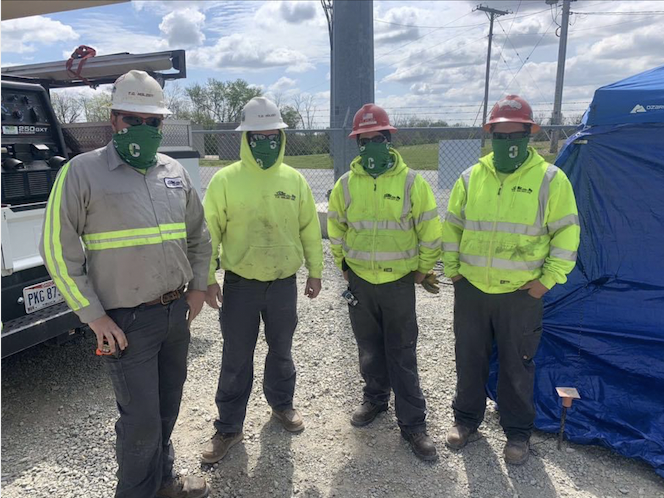
Every year, spring kicks off “construction season.” As temperatures rise, the amount of projects do, too. Even with stay-at-home orders in place, spring 2020 has been no different. While the rest of society has seen production delays, departmental layoffs, and countless other changes week after week, one thing that has stayed the same is the demand for construction and its dedication to safety.
We spoke with Vincent Irvin, Laborers’ Statewide Apprenticeship Coordinator, who gave us an inside look at construction in COVID-19.
Irvin says the industry’s ingrained adaptability is what has helped it continue to thrive in this time.
I tell individuals that these are great career pathways. Yes, this project might end. But there’s more work that’s coming. There’s always going to be more work.
I’ve made a career of 35 years of working temporary jobs.
The more people are aware of the ongoing opportunities, the more interest people have in the in-demand industry.
I’ve received probably 100 emails from Ohio residents that were laid off or furloughed with their current company or employer and were looking at possibly transitioning to a completely different field or occupation.
Many commented that they knew that construction was an essential industry, and they felt like it was the moment in their life that they had to re-examine the career path they were currently on. That was an eye-opener for some of the people who realized that they were not an essential employee while working in [their existing] industry.
To accommodate this influx of interested individuals, Irvin and his team got creative.
The application process is 100% online. All of our forms are able to be shared back and forth via email, and the coordinators are using Zoom to meet with that new applicant.
Since many new applicants are coming from other industries, Irvin has made sure that he and his team guide each person based on his or her unique personality and job preferences.
For the most part, everyone knows what a plumber does and what a carpenter is, but not so much the other crafts. If they’re not really familiar with the industry and they really don’t know where to begin, I give them a basic rundown of each craft, and, depending on where they live, a reference or recommendation to an apprenticeship program in their region or district.
Irvin advises anyone currently out of work to explore all options when considering a move to construction.
I encourage everyone to look at all of the crafts. I think there are 18 union apprenticeship programs.
I just ask them to take a hard look at their inner self and what they’re interested in: “Do you like to swing a hammer?” “Do you like to paint walls?” “Do you hang wallpaper in your house?” “Do you like home projects or home improvement projects?” That allows me to lead them into a craft that they may be more suited for.
These new-to-the-industry individuals have continued to prepare for their positions, even without in-person training.
We’re able to onboard new apprentices and still meet the [industry standards] to have the OSHA 10 orientation under their belts prior to starting work.
Training is also available to those currently working in the industry.
We offer about 113 hours of online training, like awareness refreshers on OSHA’s building codes, for apprentices and or journeymen. The Department of Energy has allowed us to extend expiration dates to allow the industry to develop their courses so it is compatible with technologies such as zoom.
Once individuals are placed with the right company in their ideal position, they can immediately work safely with extra safety measures in place.
Yes, we provide some COVID-19 toolbox training talks, [including] hazardous working around those types of conditions. We sent out a lot of communication to the employers, team members and workers over the last month.
That commitment to safety has been consistent industry-wide.
The contractors wanted to make sure they were moving forward correctly while they were bringing as many people on as possible during this pandemic. I got many emails from contractors, asking: “Could we do this?” “Are we allowed to do that?” “Does this decision impose on the apprenticeship program?” “Am I violating a rule or code somewhere?”
This preparedness will elevate the entire construction industry as it prepares for the busiest season of all.
[Construction companies] want apprentices to be able to work at a higher level and to have as many people as possible.
Irvin reassures hopeful apprentices that he and his team will support them throughout the entire process.
If an apprentice was to get laid off in July, which rarely happens, we will always make a concerted effort to place him or her with another employer immediately. We just don’t allow that person to sit on the bench and wait for the contractor to call. We will call the contractors on behalf of the apprentice.
Talking with Irvin gives us confidence in the future. The construction industry will continue to cope with the ups and downs for consistent progress.
Photo submitted by Chris Frazier from T.C. Holzen in Dayton.